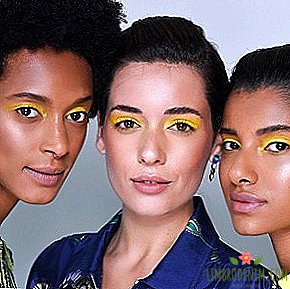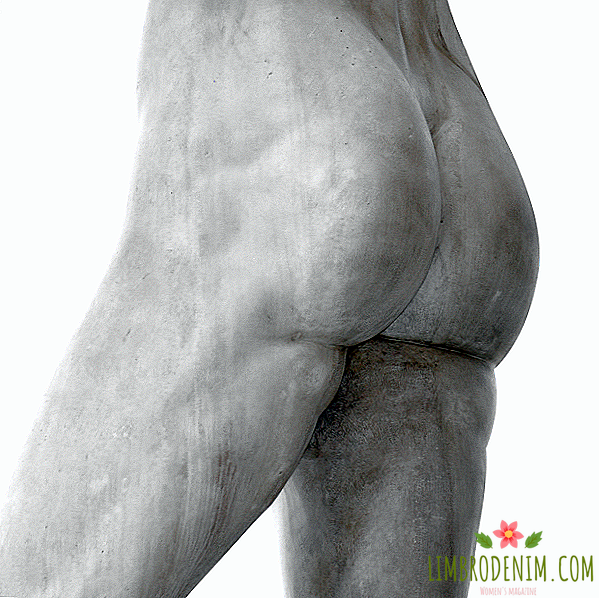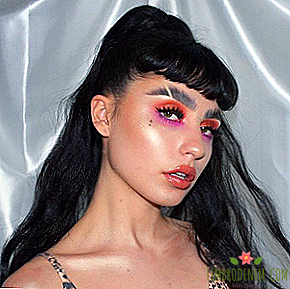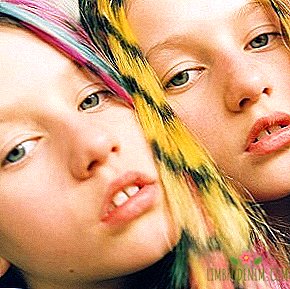Photographer Hans Feurer about the return of naturalness
In the Moscow gallery RuArts The first solo exhibition of one of the most influential fashion-photographers of the world, Hans Feurerer, opened, which began to make first shoots in the 60s and in front of which the fashion industry was forming, which we know today. At various times, Hans shot for Twen, Numéro, Vogue, NOVA, AnOther, GQ Style, ELLE and the Pirelli calendar. The peak of his career came in the 80s, then Feurer shot the legendary African advertising campaign for Kenzo, which later became one of his most famous works. Hans became famous as a photographer, speaking for the purity of frames - he does not use filters and almost does not retouch photos, relying on naturalness. We talked with Hans Foyrer about beauty, naturalness and how the fashion industry has changed in half a century.

 How did you come to start doing fashion photography?
How did you come to start doing fashion photography?
I was born in 1939 in Switzerland into an ordinary family. We were not rich, my parents divorced early, I had two more younger brothers hanging around my neck. At 20, I got my first job at an advertising agency, but quickly grew to an art director. I did a lot of things: I was a graphic artist, illustrator, I graduated from art school in a painting course. After living and working in various agencies in London and Paris, he left for two years to travel across Africa on Land Rover, slept by the fire in the open air and photographed. South Africa has changed me, I came to the conclusion that I want to preserve the beauty of the world in photos. The way it is.
 The beginning of your photographic career coincided with the peak of pop art, the rise of fashion and popular culture. Can something like this happen again?
The beginning of your photographic career coincided with the peak of pop art, the rise of fashion and popular culture. Can something like this happen again?
There was a revolution. It was the era of swinging London, it seemed that everything was possible, the world was open, people were open to new ideas, and it was easy to start collaborating with the best magazines or launch your own. Most of all I shot for the British independent magazine NOVA magazine, which was published in the period from 1965 to 1975. This was the start of visual culture. In the 1960s and 1970s, fashion was not yet a business, women expressed themselves through clothes, so it was interesting to watch them. But this feeling is back now. I see and feel this in Moscow, where there is freedom and the opportunity to start from scratch. You now have the swinging London of the 60s. I am impressed.

I like the shadows, light, smells, texture, body, wrinkles. I'm afraid of everything synthetic and artificial

 Your shoot for NOVA magazine, which also brought in Moscow, looks more than modern. How has your work changed in the 50 years that you spent inside the fashion industry?
Your shoot for NOVA magazine, which also brought in Moscow, looks more than modern. How has your work changed in the 50 years that you spent inside the fashion industry?
In fact, for all this time for me nothing has changed. I still do not use filters and speak for naturalness. For me, photography is a documentation of reality, not myth-making. For me it is important to capture life in its details. I like the shadows, light, smells, texture, body, wrinkles. I want to feel the breath, the wind, plastic, facial expressions, skin and hair. Zen Buddhist philosophy is close to me, contemplation is the path to knowledge. I do not like to shoot in a studio with artificial light. I prefer to work with the natural: in the city, in the desert, in the mountains, on the beach. I'm afraid of everything synthetic and artificial. Perhaps that is why I avoid the Internet, I don’t even have a website. Virtual reality distracts people from the surrounding beauty of the world, ignoring what is happening with the planet, and it scares me. I love our land, I love women. I happened to work with the most beautiful women of the planet: Claudia Schiffer, Letizia Casta, Christy Turlington, Stephanie Seymour, Yasmin Gauri and many others. The only one I haven’t taken off yet is Kate Moss. I like to show the female body as it is, because it is beautiful.
 Your idea of naturalness contrasts the gloss, which artificially forms a picture of the world and offers unrealistic images. How do you manage to defend the idea of naturalness, working with famous publications?
Your idea of naturalness contrasts the gloss, which artificially forms a picture of the world and offers unrealistic images. How do you manage to defend the idea of naturalness, working with famous publications?
There was a period of time, from 1998 to 2002, when I was not at all engaged in fashion shooting. There was a digital revolution and artificial images were in demand: women made plastic dolls with perfect features and body. About the soul there was no question. The girls played plastic Barbie and became Barbie themselves. In this sense, America scares me - children watch TV, where they talk only about dollars. Children in Europe still play what is done by the hands of their ancestors, they come into contact with it, and this is good - they turn on the imagination. During this period of the late 90s, no one turned to me for shooting, I was not in demand, because no one needed naturalness. For these four years, I again went to Africa and filmed a lot of nature. But I'm glad I returned the course to naturalness. I and sensuality are again in demand, like 50 years ago. People want to breathe life. Society seemed to wake up after a long sleep. And the fashion and beauty industry is responsible for how we perceive ourselves. People working in this field should be aware of this.


 interacting with fashion for so many years, you probably found the answer for yourself, what is its phenomenon?
interacting with fashion for so many years, you probably found the answer for yourself, what is its phenomenon?
Fashion is a projection of what we dream, it is an image that is hidden behind clothes. When a woman dresses, she chooses a role. Fashion offers these roles. There is a big difference between a girl who is extremely sexy and one who prefers monochrome and geometric things. These are different poles, different worlds, characters. There is always a personality behind the clothes. When I do fashion photography, I think about the character of a woman who is hiding under clothes. I do not like vulgarity - the idea that a woman is used as an object is unpleasant, for example, her image sells goods or affects the male audience of the brand with intentional aggressive sexuality. I think women are stronger and smarter than men. I like free women. My heroines are warlike, like the Amazons. They are the exact opposite of Playboy heroines, but they always have sex. Sex is great and beautiful. I love sex, but sex is not a service to a man.
 but the industry often thinks otherwise. What do you think about the vector of fashion development?
but the industry often thinks otherwise. What do you think about the vector of fashion development?
Now fashion is just business. For example, Kenzo, for whom I shot ads. Now Kenzo is just a name, an industry, money. Everything is very thoughtful. And this is sad.
Photo: Alexander Karnyukhin, RuArts Gallery




